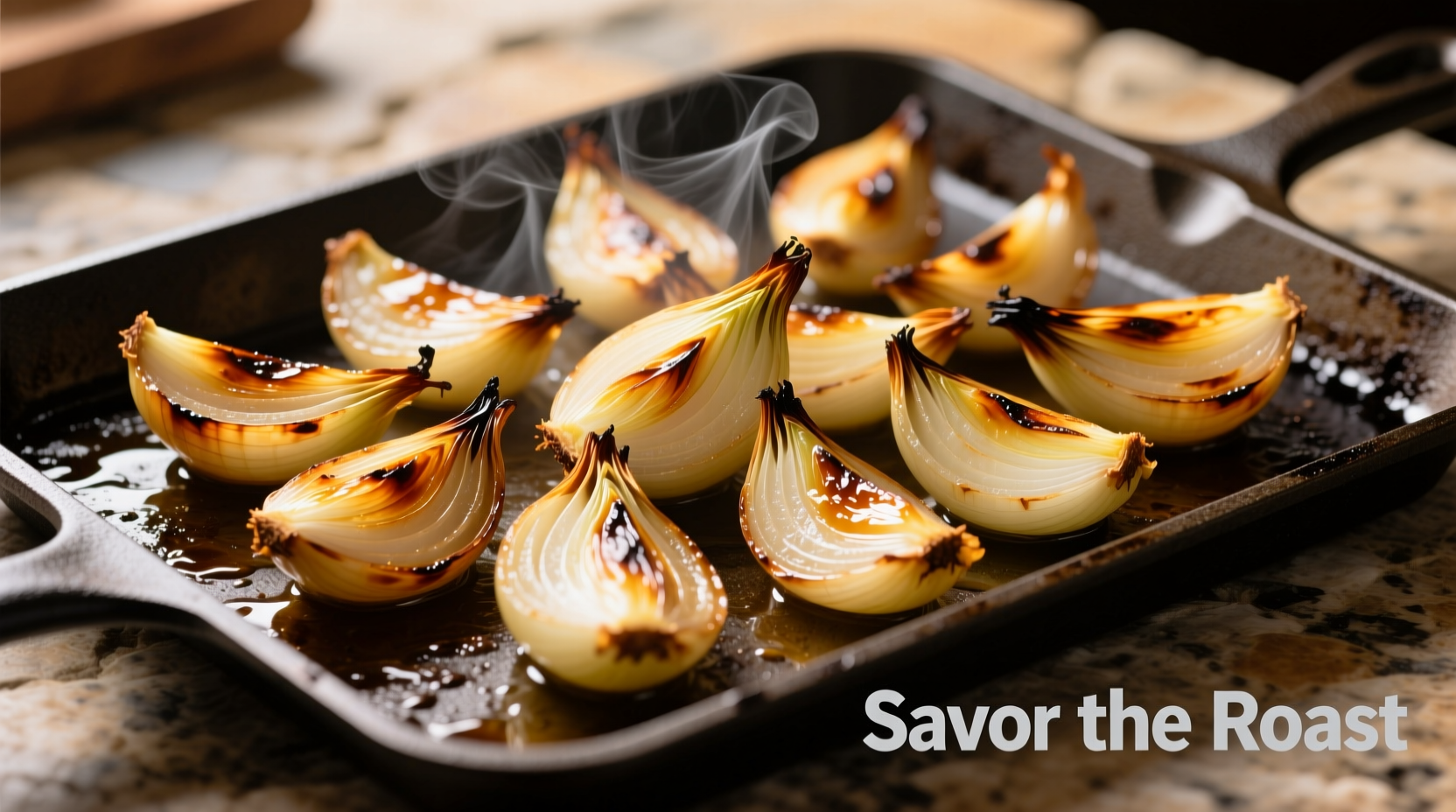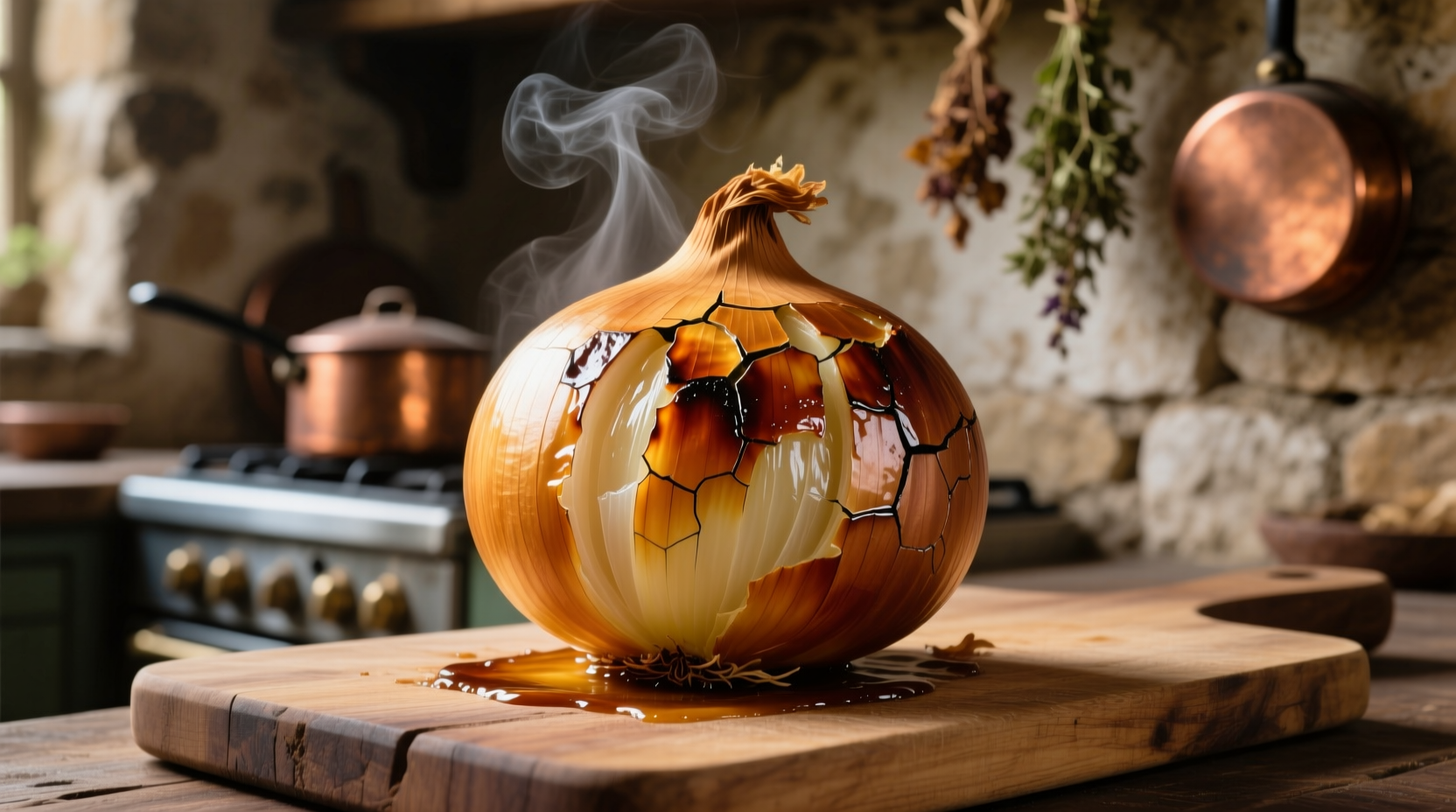The Complete Guide to Perfect Roasted Onions
Nothing elevates a simple meal like perfectly roasted onions. When executed correctly, this humble technique transforms sharp alliums into sweet, jammy morsels that enhance everything from roasted meats to vegetarian bowls. Professional chefs rely on roasted onions for their complex flavor profile that develops through careful temperature management and timing.
Why Roasting Beats Other Cooking Methods
Unlike sautéing or grilling, roasting creates even caramelization throughout the onion without requiring constant attention. The dry heat environment allows moisture to evaporate gradually while natural sugars concentrate. This process triggers the Maillard reaction between 285-320°F (140-160°C), creating hundreds of new flavor compounds that raw or boiled onions simply can't achieve.
| Cooking Method | Temperature Range | Time Required | Flavor Development |
|---|---|---|---|
| Roasting | 375-425°F (190-220°C) | 30-45 minutes | Deep, complex caramelization throughout |
| Sautéing | 300-350°F (150-175°C) | 15-25 minutes | Surface browning, less even sweetness |
| Grilling | Varies by heat zone | 10-20 minutes | Charred exterior, raw interior unless sliced thin |
Selecting and Preparing Onions for Roasting
The variety you choose significantly impacts your roasted onion results. Yellow onions provide the best balance of sweetness and pungency for most applications, while red onions maintain more color contrast but can become slightly bitter if overcooked. Sweet onions like Vidalia require reduced roasting time to prevent burning due to their higher sugar content.
For optimal results:
- Cut onions into uniform 1-inch wedges to ensure even cooking
- Keep root end intact to hold wedges together during roasting
- Toss with 1-2 tablespoons high smoke-point oil per onion (avocado or grapeseed oil works better than olive oil for high-heat roasting)
- Add salt before roasting to draw out moisture and accelerate caramelization
- Space wedges in a single layer with cut sides down on the baking sheet

Mastering the Roasting Process
The critical temperature window for perfect roasted onions spans from 375-425°F (190-220°C). Below 375°F, onions steam rather than roast, resulting in soggy texture. Above 425°F, the natural sugars burn before the interior fully softens. Professional kitchens often start at 425°F for 15 minutes to initiate browning, then reduce to 375°F for the remainder of cooking.
Timing varies based on onion size and oven accuracy:
- Small onions (3-4 inch diameter): 25-35 minutes
- Medium onions (4-5 inch diameter): 30-40 minutes
- Large onions (5+ inch diameter): 35-45 minutes
Flip onions halfway through cooking for even browning. The process completes when onions reach an internal temperature of 190°F (88°C) and offer no resistance when pierced with a fork.
Troubleshooting Common Roasting Problems
Even experienced cooks encounter issues with roasted onions. Understanding these common problems helps you adjust technique for perfect results every time:
- Burnt exteriors, raw interiors: Oven temperature too high or onions cut unevenly. Solution: Reduce temperature to 375°F and ensure uniform wedge size.
- Soggy, not caramelized: Too much moisture or overcrowded pan. Solution: Pat onions dry before oiling and use two baking sheets if necessary.
- Bitter flavor: Over-roasting or using sweet onion varieties at standard temperatures. Solution: Reduce cooking time by 5-10 minutes for sweet onions.
- Uneven browning: Inconsistent oven heat or flipping too frequently. Solution: Rotate pan halfway through cooking and flip only once.
Culinary Applications for Perfectly Roasted Onions
Once mastered, roasted onions become a versatile kitchen staple. Their sweet, mellow flavor enhances numerous dishes without overpowering other ingredients. Chefs at the Culinary Institute of America recommend these applications:
- Add to grain bowls for natural sweetness without added sugar
- Blend into soups and sauces for depth of flavor (try in French onion soup base)
- Top burgers or sandwiches instead of raw onions
- Mix with roasted root vegetables for holiday sides
- Chop finely and incorporate into savory tarts or quiches
For extended shelf life, roasted onions keep refrigerated for up to 5 days or frozen for 3 months. The USDA Food Safety and Inspection Service confirms proper storage prevents bacterial growth while maintaining quality (source).
Advanced Techniques for Flavor Enhancement
Once you've mastered basic roasting, experiment with these professional techniques to elevate your results:
- Add 1 teaspoon balsamic vinegar during the last 10 minutes for complex acidity
- Include fresh thyme or rosemary sprigs on the baking sheet for herbal notes
- Finish with flaky sea salt and a squeeze of lemon juice after roasting
- Try cast iron roasting for superior heat retention and crust development
- Combine with other roasted vegetables like carrots or bell peppers
Remember that oven calibration varies significantly. The National Institute of Standards and Technology recommends verifying your oven temperature with an independent thermometer for consistent results (source).











 浙公网安备
33010002000092号
浙公网安备
33010002000092号 浙B2-20120091-4
浙B2-20120091-4